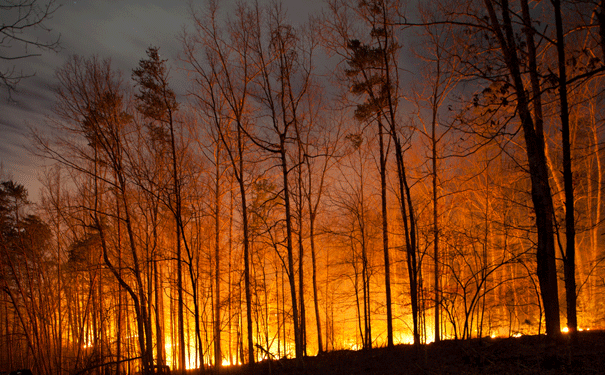
Chemicals in bushfire smoke can stimulate seed germination. Image: Shutterstock
Witchweeds and smoke-responsive species have taken advantage of chemical signals, but not for the same reasons.
Chemical agents strigolactones and karrikins both trigger the same molecular machinery to stimulate seed germination. But, despite being related, they don’t affect the same plants, according to researchers from the University of Western Australia.
Strigolactones stimulate witchweeds, which live off a range of cereal crops and weedy grasses, while karrikins cause dormant seeds to germinate after bushfires. However, karrikins do not stimulate witchweeds and smoke-responsive species do not respond to strigolactones.
A new study has revealed two related genes that distinguish the two signals. “We now understand how a pair of related genes allow the plant to respond separately to karrikins and strigolactones,” lead author Dr Mark Waters said.
Waters suggested that the expression level of these genes, relative to each other, changes the relative sensitivity of seeds to karrikins and to strigolactones. “It’s like having two keys to open two different doors of the same control box,” he said.
“Each key has to match the correct lock but both get access to the controls.”
Strigolactones are actually used by the host plant to control branch shotting and root development, as well as encouraging an association with beneficial mychorrhizal fungi. However, the strigolactones also stimulating the dormant witchweed seeds, which then attack the host.
“It appears that parasitic weeds have exploited this chemical signal, using it as a cue to germinate and attack the host plant roots,” Waters said. Witchweeds have caused serious losses to food production in Africa and Asia.
Karrikins are found in smoke and released into the soil by rainfall after a bushfire. The chemical signals tell seeds that there is a great opportunity to exploit the burnt landscape above, triggering seed.
“It appears that plants have adapted a common mechanism for two very different cases of opportunism — parasitism and fire,” Waters said.
The research will provide an important tool in developing strategies for seed germination. One possible application is in agriculture, where the application of germination stimulants means the weeds can be cleared by herbicide application prior to sowing the crop seed.
“At present, we are some way off from understanding how best to formulate such compounds for use in agriculture,” said Waters. Karrikins can be inactivated by UV light, and strigolactones decompose when exposed to water or acidic conditions.
““Laura Boness






